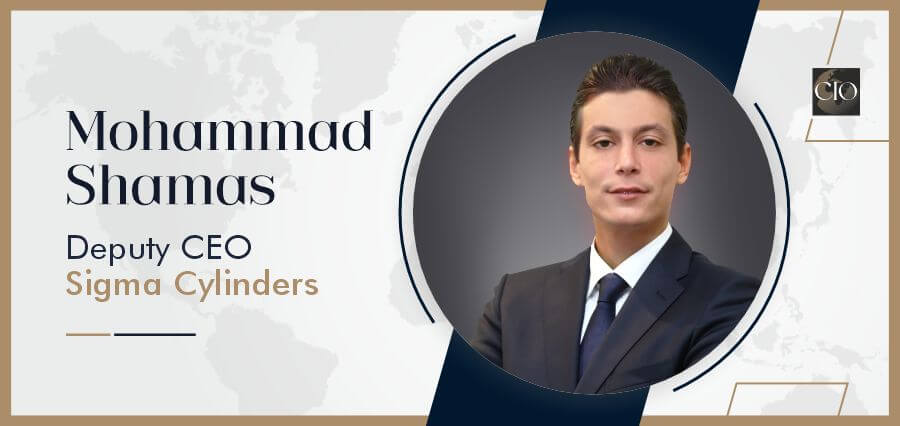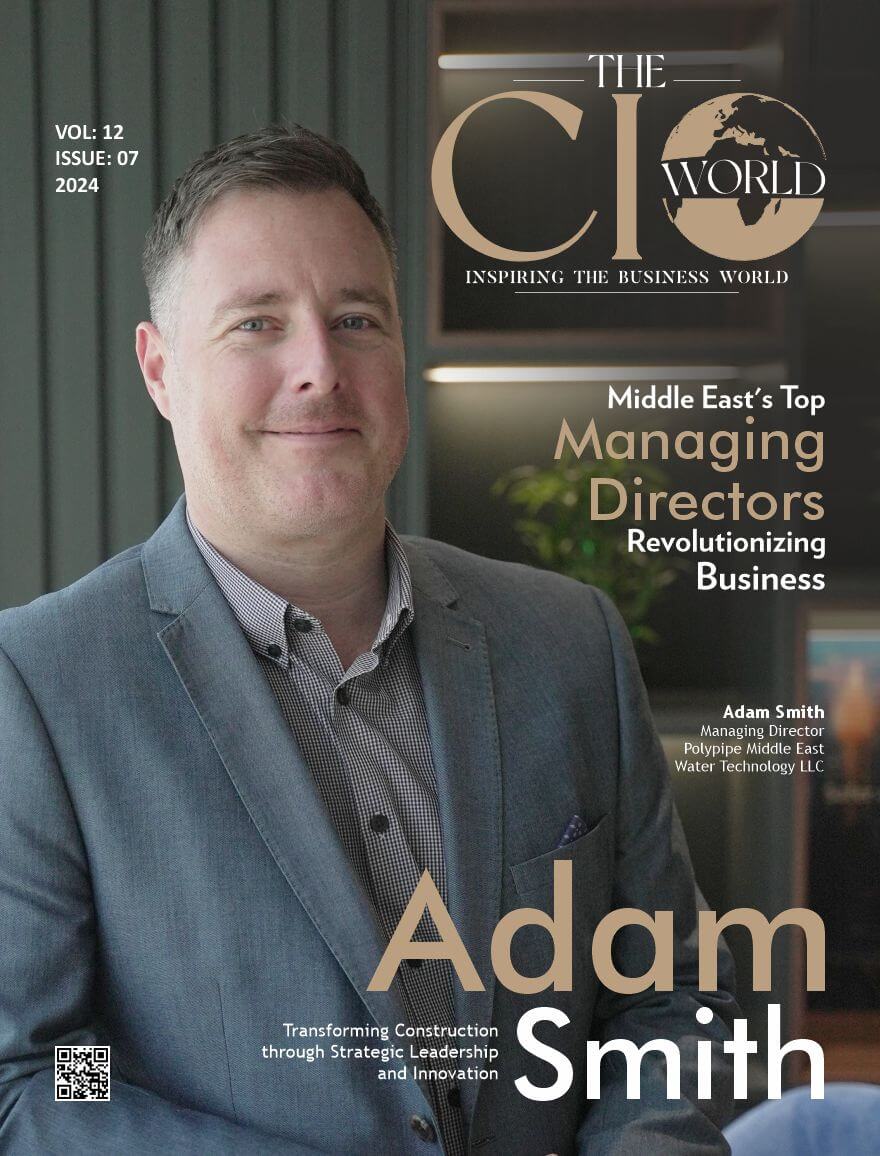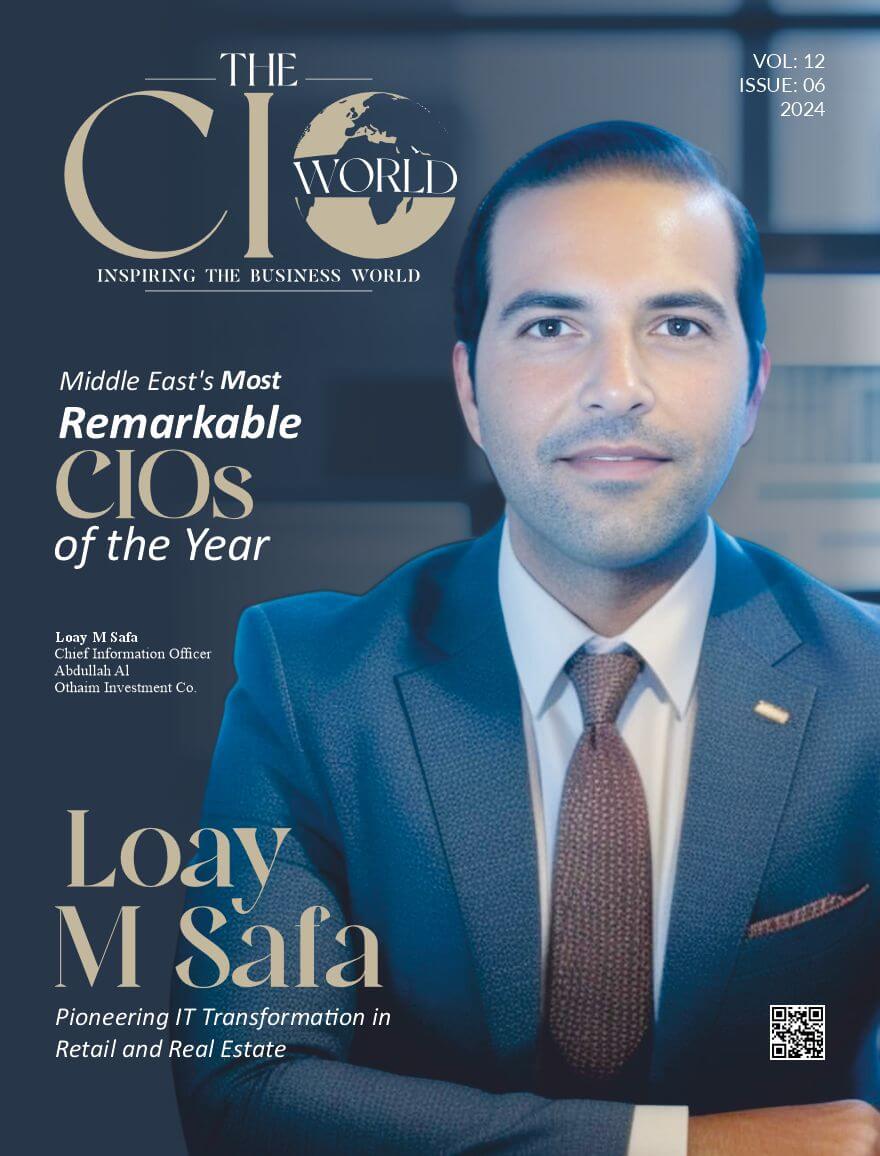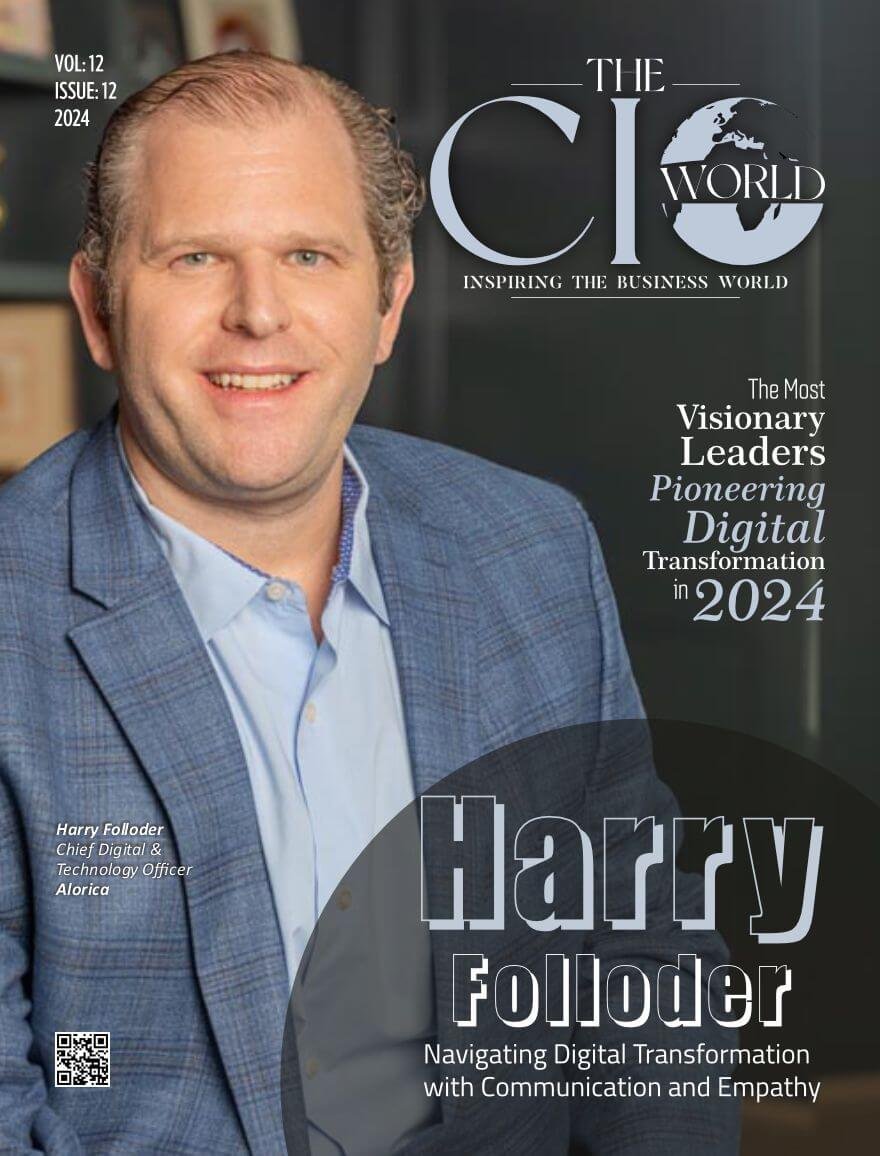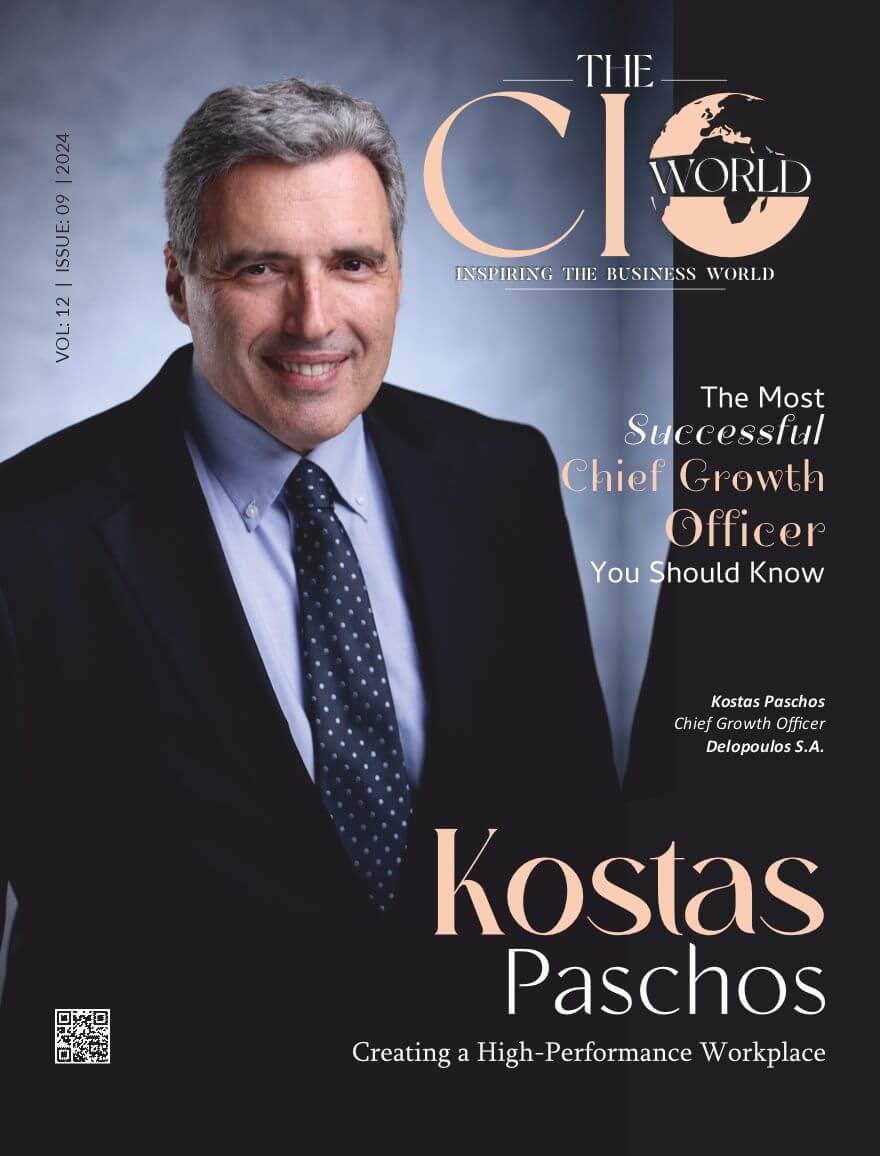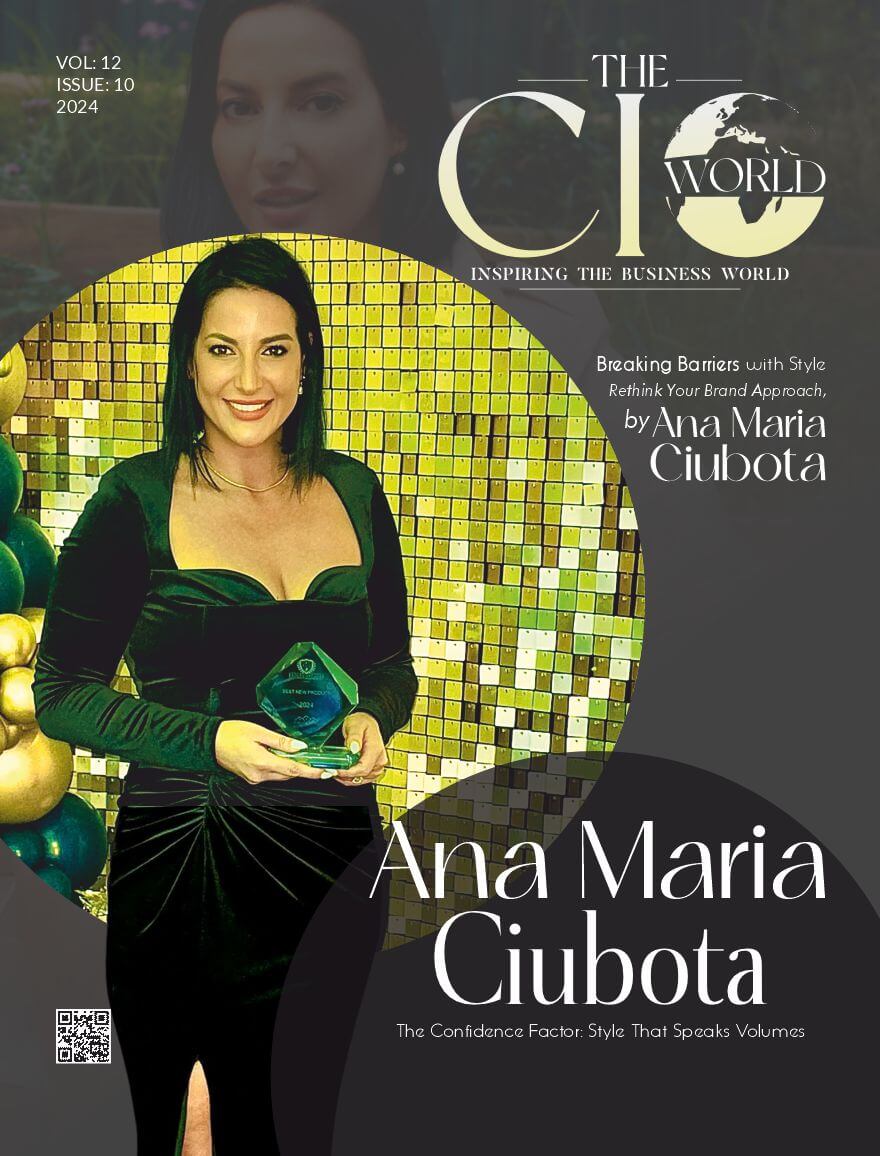An Emerging Leader in the Manufacturing Sector!
By combining advanced technology with stringent quality control processes, machinery manufacturing has consistently delivered products that exceed industry standards. To address the growing demand for reliable and safe cylinder solutions, experts in these organizations aim to innovate and set new standards in the industry.
With a robust background in strategy, management, and business development, Mohammad Shamas, the Deputy Chief Executive Officer at Sigma Cylinders, has dedicated his career to optimizing operations in the Middle East and Africa.
He attained a Bachelor’s degree in Business Administration and Management from the Lebanese American University, he has utilized his academic foundation to drive significant growth and operational excellence throughout his professional journey.
His motivation derives from his passion for turning complex problems into growth opportunities. He is especially motivated by the unpredictable nature of business instances, where he can have a genuine impact.
In decision-making, he balances intuition with data-driven insights. His extensive experience in strategy and management consulting has taught him the importance of comprehensive data analysis. This combination of analytical and agile decision-making enables him to navigate complex situations effectively.
Mohammad sets clear, achievable goals using the SMART criteria, aligning them with the company’s broader strategic objectives. He provides constructive, timely, and balanced feedback, focusing on both positive reinforcement and areas for improvement. He conducts regular one-on-one meetings to discuss progress and development goals to stay ahead in the market.
Here are the interview highlights:
Can you please introduce yourself and your motivation to embark on this sector?
My name is Mohammad Shamas, and I am currently the Deputy Chief Executive Officer at Sigma Cylinders. My professional journey has been deeply rooted in strategy, management consulting, and business development, with a specific focus on scaling and optimizing operations in the Middle East and Africa.
To focus on acting COO, where I believe connecting operations to commercials is the best approach. I hold a bachelor’s degree in Business Administration and Management from the Lebanese American University. This academic foundation equipped me with a broad understanding of business principles, which I have applied throughout my career to drive growth and operational excellence.
My motivation to work in this sector comes from a passion for turning complex challenges into opportunities for growth. Whether it’s leading large teams or spearheading expansion initiatives, I thrive on the dynamic nature of business environments and the chance to make a tangible impact. I am particularly inspired by the potential to create value not just for the company, but also for the teams I work with, ensuring that everyone grows and learns along the way.
Could you please give a brief introduction to your company and its inception story?
Sigma Cylinders is a pioneering company in the manufacturing sector, specializing in the production of high-quality LPG cylinders. Established to meet the growing demand for reliable and safe cylinder solutions, Sigma Cylinders has quickly positioned itself as a leader in this niche market.
The company was founded with a vision to innovate and set new standards in cylinder manufacturing. Since its inception, Sigma Cylinders has focused on combining advanced technology with robust quality control processes to deliver products that exceed industry standards. Our journey has been marked by continuous improvement and adaptation to market needs, allowing us to expand our presence across various regions, particularly in the Middle East and Africa.
The mix of family business and corporate is the best combination for our culture, structure, and the markets we’re in to make decision-making efficient.
Can you describe your leadership style? How do you motivate your team?
My leadership style is characterized by a people-centric approach. I believe in leading by example, fostering a culture of empowerment, and connecting deeply with my team. As someone who is extroverted and enthusiastic about people, I thrive on creating an environment where team members feel valued and motivated to contribute their best.
Leading a diverse team of over 1,750+ professionals across different geographical areas, I focus on empowering individuals by recognizing their strengths and providing opportunities for growth and development. I encourage open communication and actively seek input from all team members, ensuring that everyone’s voice is heard. Sharing knowledge and big ideas is a cornerstone of my approach. I believe that when people are well-informed and engaged, they are more likely to be motivated and productive.
How do you approach decision-making? Do you rely on intuition or data-driven insights?
In my decision-making process, I strive to balance intuition with data-driven insights. My extensive experience in strategy and management consulting has taught me the value of making informed decisions based on comprehensive data analysis. However, I also recognize the importance of intuition, especially when dealing with rapidly changing environments or complex human dynamics.
I typically start by gathering and analyzing relevant data to understand the potential outcomes and implications of a decision. This analytical approach provides a solid foundation for making informed choices. However, I also trust my gut feelings and experience, particularly in situations where data may not provide a complete picture or where quick decisions are necessary. This combination allows me to be both analytical and agile in my decision-making.
How do you ensure effective communication within your team? Are there any specific strategies you use?
Effective communication is vital in any organization, especially when managing a large and geographically dispersed team. I ensure effective communication through a few key strategies:
- Regular Updates and Meetings: I schedule regular meetings and updates to keep everyone informed about company goals, project progress, and any changes in strategy. This helps maintain alignment and ensures that everyone is on the same page.
- Open-Door Policy: I maintain an open-door policy where team members feel comfortable approaching me with their ideas, concerns, or feedback. This fosters a culture of openness and transparency.
- Use of Collaborative Tools: Leveraging technology is essential in today’s world. We use various collaborative tools and platforms that facilitate real-time communication and collaboration, making it easier to manage teams across different locations.
- Cultural Sensitivity: Understanding and respecting cultural differences within the team is crucial. I make it a point to be culturally sensitive and encourage my team to do the same, which helps in building strong, respectful relationships.
How do you handle conflicts within your team? What strategies do you use to resolve them?
Conflict is an inevitable part of any team dynamic, especially in diverse and fast-paced environments. My approach to handling conflicts is proactive and centered around understanding and empathy.
- Early Intervention: I believe in addressing conflicts early before they escalate. Open communication channels help identify issues as they arise.
- Active Listening: I make it a point to listen actively to all parties involved in a conflict. Understanding different perspectives is crucial for finding a fair and effective resolution.
- Finding Common Ground: I focus on finding common ground and shared goals that all parties can agree on. This helps in redirecting the focus from personal differences to team objectives.
- Mediation: If needed, I act as a mediator, facilitating discussions and helping team members come to a mutual agreement. This often involves negotiating compromises that are acceptable to everyone involved.
How do you set goals for your team? What criteria do you use to determine success?
Setting clear and achievable goals is fundamental to driving performance and ensuring that everyone is aligned with the company’s vision. My approach to goal-setting involves:
- SMART Goals: I use the SMART criteria (specific, Measurable, Achievable, Relevant, Time-bound) to set goals that are clear and actionable. This framework helps in breaking down larger objectives into manageable tasks.
- Alignment with Company Strategy: Goals are always aligned with the broader strategic objectives of the company. This ensures that individual and team efforts contribute directly to our overall mission and vision.
- Regular Monitoring and Feedback: I believe in continuous monitoring and providing regular feedback. This helps in tracking progress and making necessary adjustments to stay on course.
- Defining Success: Success is determined by achieving the set goals within the specified timeframe and the impact of these achievements on the company’s growth and operational efficiency. We also measure success by the level of team engagement and satisfaction, as these are critical indicators of long-term success.
What strategies do you use to build a cohesive team? How do you foster a positive team culture?
Building a cohesive team and fostering a positive culture are essential for high performance and satisfaction. My strategies include:
- Team-Building Activities: Regular team-building activities help strengthen relationships and build trust among team members.
- Recognition and Rewards: Acknowledging and celebrating achievements, both big and small, go a long way in boosting morale and reinforcing positive behavior.
- Inclusive Culture: I promote an inclusive culture where diversity is valued and everyone feels welcome. This includes respecting different viewpoints and encouraging collaboration across different cultures and backgrounds.
- Professional Development: Providing opportunities for learning and growth helps keep the team engaged and motivated. I support continuous development through training programs and mentoring.
- Empowering Team Members: I believe in empowering team members by giving them autonomy and responsibility. This helps in building a sense of ownership and accountability.

